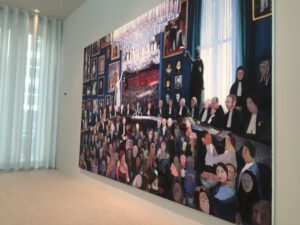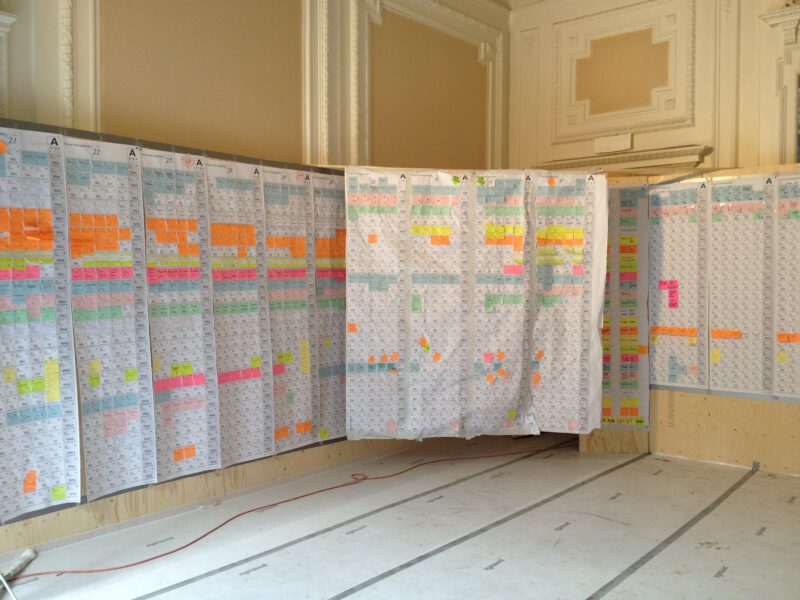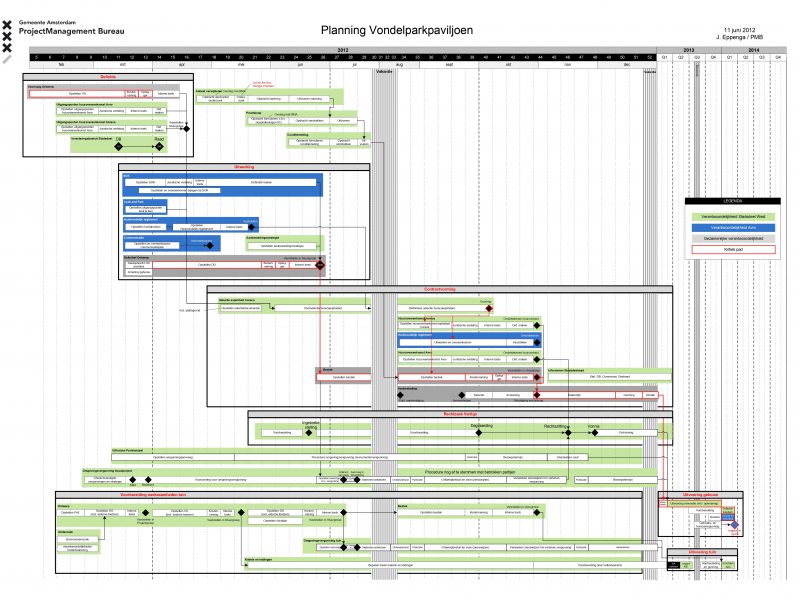 While preparing the new DCM course for the TuDelft I had the privilege to visit the new building of the Dutch Supreme Court in the Hague. I discussed contribution of key stakeholders for the course.?We discussed for instance the involvement of the client and how to deal with the subjective things like radiance, ambiance, societal value, intrinsic value. Especially for a building like the Supreme Court it is not about square meters, profit or indoor air quality first, but about the value of the building and what it represents in our democratic society. I think this is best explained through the huge painting by Helen Verhoeven in the entrance hall.
While preparing the new DCM course for the TuDelft I had the privilege to visit the new building of the Dutch Supreme Court in the Hague. I discussed contribution of key stakeholders for the course.?We discussed for instance the involvement of the client and how to deal with the subjective things like radiance, ambiance, societal value, intrinsic value. Especially for a building like the Supreme Court it is not about square meters, profit or indoor air quality first, but about the value of the building and what it represents in our democratic society. I think this is best explained through the huge painting by Helen Verhoeven in the entrance hall.
The huge painting in the hall measures 4.0 x 6.47 metre and it took the artist more than two years to finish it. The painting is already called the new Nachtwacht painted by Rembrandt van Rijn and it fits in a long tradition of group portraits in European and Dutch painting history. But it also refers to the long tradition of the Dutch juridical system and law. It is an iconic painting like we know from gothic and renaissance times. Standing before the painting you can recognise several images from Dutch history, the bible, former kings, governors, judges, philosophers, painters and so on. I see Baruch Spinoza, Hugo de Groot, Lady Justice with her attributes balance, blindfold and sword. I recognise Judith with the head of Holofernes. The painting is about ?Ratio and intuition? and about ?just and unjust?. The whole represents the essence of what a?Supreme Court is for a nation: the members of the court in the centre guarding through law over its citizens and for the citizens in the back. I was impressed and amazed.
Why put so much effort into this painting?
The essence is representation. This painting represents the essence of the supreme court for our country. The painting represents the meaning of the client; the Supreme Court. The painting gives meaning to the court, to the importance of the building as a whole because it represents the essence of justice and its meaning for Dutch democracy. This meaning is stressed by the judge in the centre. This is Lodewijk Ernst Visser; the Jewish president of the supreme court, unlawfully fired by the Nazis during WWII without his colleagues protesting against it. It is, according to the Painter, to show to al judges to be always critical, to al ways stand for law. Their thru meaning for society.
As you will experience during our course, management of buildings is not only about systems, numbers, profit or checklists. Management of construction is maybe even more about sense, meaning, value, teamwork, personal skills, integrity and their meaning for society. The image of the paining helps us to understand that all actions and decisions during design and construction depend on the narrative behind. In the case of the Supreme Court what it means for our democratic society. The building, like the painting, is only the representation of it.






